Each question contains statements given in two columns which have to be matched. Statements a,b,c,d in column I have to be matched with statements p,q,r,s in column II. If the correct matches are a-p, q-s, b-q, r c-p, q and d-s, then the correctly bubbled 4x4 matrix should be as follows: Figure Column I, Column II: Differential equation order 1, p. of all parabolas whose axis is the x-axis order 2, q. of family of curves y=a(x+a)2, whre a is an arbitrary constant degree 1, r. (1+3dydx)23=4d3ydx3 degree 3, s. of family of curve y2=2c(x+√c), where c>0
To solve the problem of matching the statements in Column I with those in Column II, we will analyze each statement and determine the correct matches based on their definitions and properties.
1. Analyze Statement A (Order 1):
- Column I: Differential equation of order 1.
- Column II: P states "of all parabolas whose axis is the x-axis."
- Analysis: The general form of a parabola with its axis along the x-axis is y2=4ax. Differentiating this gives us a first-order differential equation. Thus, A matches with P.
Match: A - P
2. Analyze Statement B (Order 2):
- Column I: Order 2.
- Column II: Q states "of family of curves y=a(x+a)2, where a is an arbitrary constant."
- Analysis: The given family of curves can be differentiated to find the order. The first derivative will yield a first-order equation, and the second derivative will yield a second-order equation. Thus, B matches with Q.
Match: B - Q
3. Analyze Statement C (Degree 1):
- Column I: Degree 1.
- Column II: R states (1+3dydx)2/3=4d3ydx3.
- Analysis: This equation can be manipulated to show that it is a first-degree equation in terms of the highest derivative present. Thus, C matches with R.
Match: C - R
4. Analyze Statement D (Degree 3):
- Column I: Degree 3.
- Column II: S states "of family of curves y2=2c(x+√c), where c>0."
- Analysis: This equation can be differentiated to yield a third-degree equation. Thus, D matches with S.
Match: D - S
Final Matches:
- A - P
- B - Q
- C - R
- D - S
Summary of Matches:
- A (Order 1) matches with P (of all parabolas whose axis is the x-axis).
- B (Order 2) matches with Q (of family of curves y=a(x+a)2).
- C (Degree 1) matches with R ((1+3dydx)2/3=4d3ydx3).
- D (Degree 3) matches with S (of family of curves y2=2c(x+√c)).
- Column I: Differential equation of order 1.
- Column II: P states "of all parabolas whose axis is the x-axis."
- Analysis: The general form of a parabola with its axis along the x-axis is y2=4ax. Differentiating this gives us a first-order differential equation. Thus, A matches with P.
- Column I: Order 2.
- Column II: Q states "of family of curves y=a(x+a)2, where a is an arbitrary constant."
- Analysis: The given family of curves can be differentiated to find the order. The first derivative will yield a first-order equation, and the second derivative will yield a second-order equation. Thus, B matches with Q.
- Column I: Degree 1.
- Column II: R states (1+3dydx)2/3=4d3ydx3.
- Analysis: This equation can be manipulated to show that it is a first-degree equation in terms of the highest derivative present. Thus, C matches with R.
- Column I: Degree 3.
- Column II: S states "of family of curves y2=2c(x+√c), where c>0."
- Analysis: This equation can be differentiated to yield a third-degree equation. Thus, D matches with S.
- A - P
- B - Q
- C - R
- D - S
- A (Order 1) matches with P (of all parabolas whose axis is the x-axis).
- B (Order 2) matches with Q (of family of curves y=a(x+a)2).
- C (Degree 1) matches with R ((1+3dydx)2/3=4d3ydx3).
- D (Degree 3) matches with S (of family of curves y2=2c(x+√c)).
Similar Questions
Each question contains statements given in two columns which have to be matched . Statement (A,B,C,D) in column I have to be matched statements (p,q,r,s) in column II. Capillary rise and shape of droplets on a plate due to surface tension are shown in column - II . Match the following
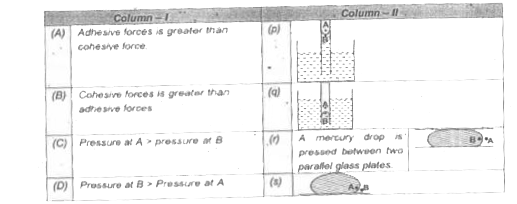
View SolutionEach question contains statements given in two columns which have to be matched . Statement (A,B,C,D) in column I have to be matched statements (p,q,r,s) in column II. Capillary rise and shape of droplets on a plate due to surface tension are shown in column - II . Match the following

View SolutionMatch the statement (A,B,C,D) in column I with the statement (p,q,r,s) in column II. The answers are to be properly bobbled.

View SolutionEach equation contains statements given in two columns which have to be matched. Statements (a,b,c,d) in column I have to be matched with Statements (p, q, r, s) in column II. If the correct match are a→p,a→s,b→q,b→r,c→p,c→q, and d→s , then the correctly bubbled 4x4 matrix should be as follows: Figure Consider the lines represented by equation (x2+xy−x)x(x−y)=0, forming a triangle. Then match the following: Column I|Column II Orthocenter of triangle |p. (16,12) Circumcenter|q. (1(2+2√2),12) Centroid|r. (0,12) Incenter|s. (12,12)
View SolutionEach question contains statements given in two columns which have to be matched. Statements (a,b,c,d) in column I have to be matched with statements (p,q,r,s) in column II. If the correct match are a-p, s, b-r c-p, q. and d-s, then the correctly bubbled 4x4 matrix should be as follows: figure Column I, a) If ∫2x√1−4xdx=ksin−1(f(x))+C, then kis greater than, b) If ∫(√x)5(√x)7+x6dx=aln(xk)xk+1+c, then akis less than, c) If ∫x4+1x(x2+1)2dx=kln|x|+m1+x2+n, where nis the constant of integration, then mkis greater than, d) If ∫dx5+4cosx=ktan−1(mtanx2)+C, then k/mis greater than, COLUMN II p) 0 q) 1 r) 3 s)4
View SolutionEach question contains statements given in two columns which have to be matched. Statements a,b,c,d in column I have to be matched with statements p,q,r,s in column II. If the correct match are a-p, a-s, b-r, c-p, c-q, and d-s, then the correctly bubbled 4 x 4 matrix should be as follows: fig Column I, Column II If L=(lim)x→−1(7−x)13−2(x+1),then12L= , p. −2 If L=(lim)x→π4tan3x−tanxcos(x+π4),then−L4= , q. 2 If L=(lim)x→1(2x−3)(√x−1)2x2+x−3,then20L= , r. 1 If L=(lim)x→∞logxn−[x][x],wheren∈N,([x] denotes greatest integer less than or equal to x),then−2L= , s. −1
View SolutionMatch the statements (A, B, C, D) in Column I with the statements (p, q, r, s) in column II. The answers are to be properly bubbled.
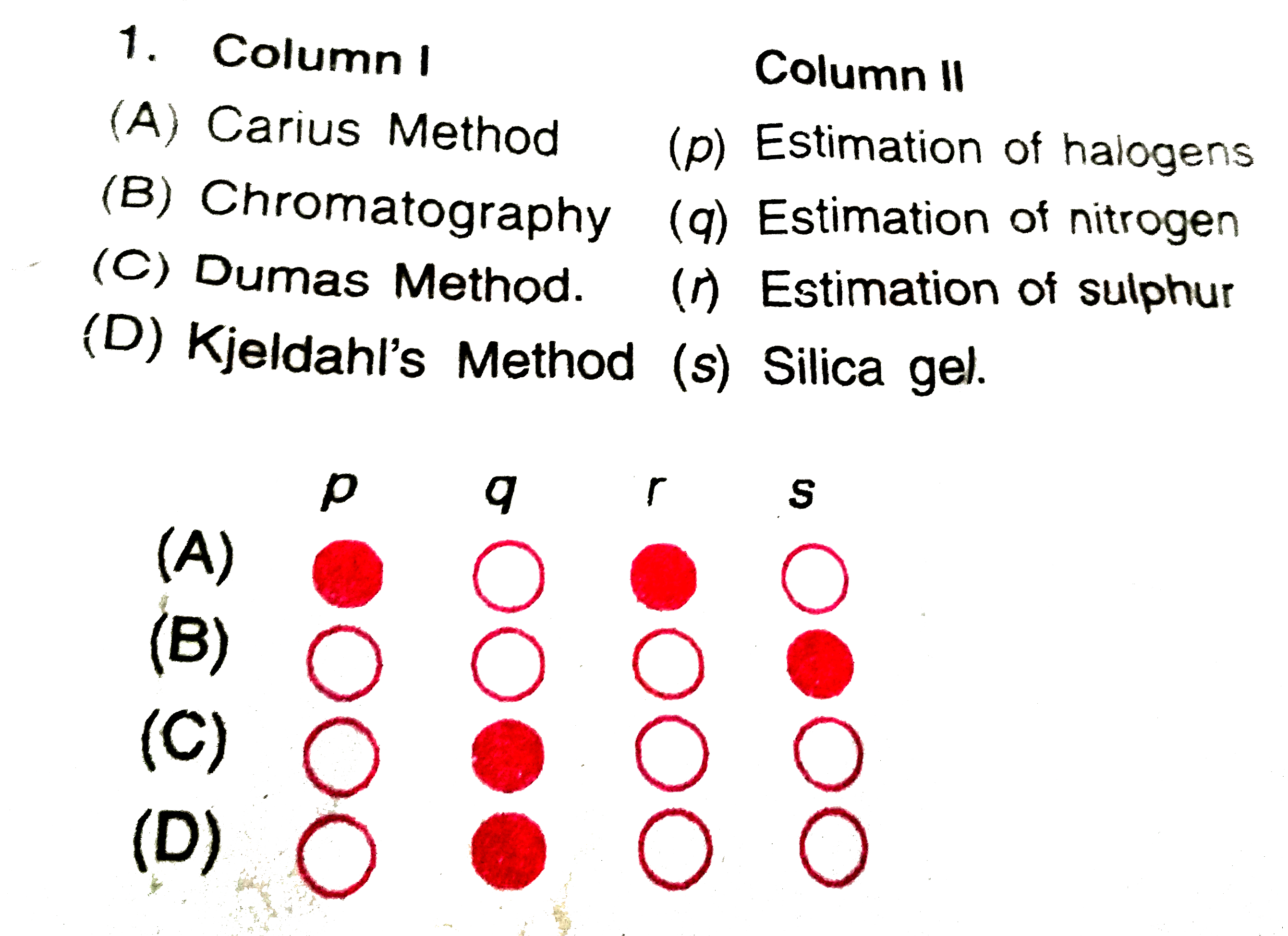
View SolutionMatch the statement (A, B, C, D) in Column I with the statements (p, q, r, s) in Column II. The answer are to be properly bubbled.
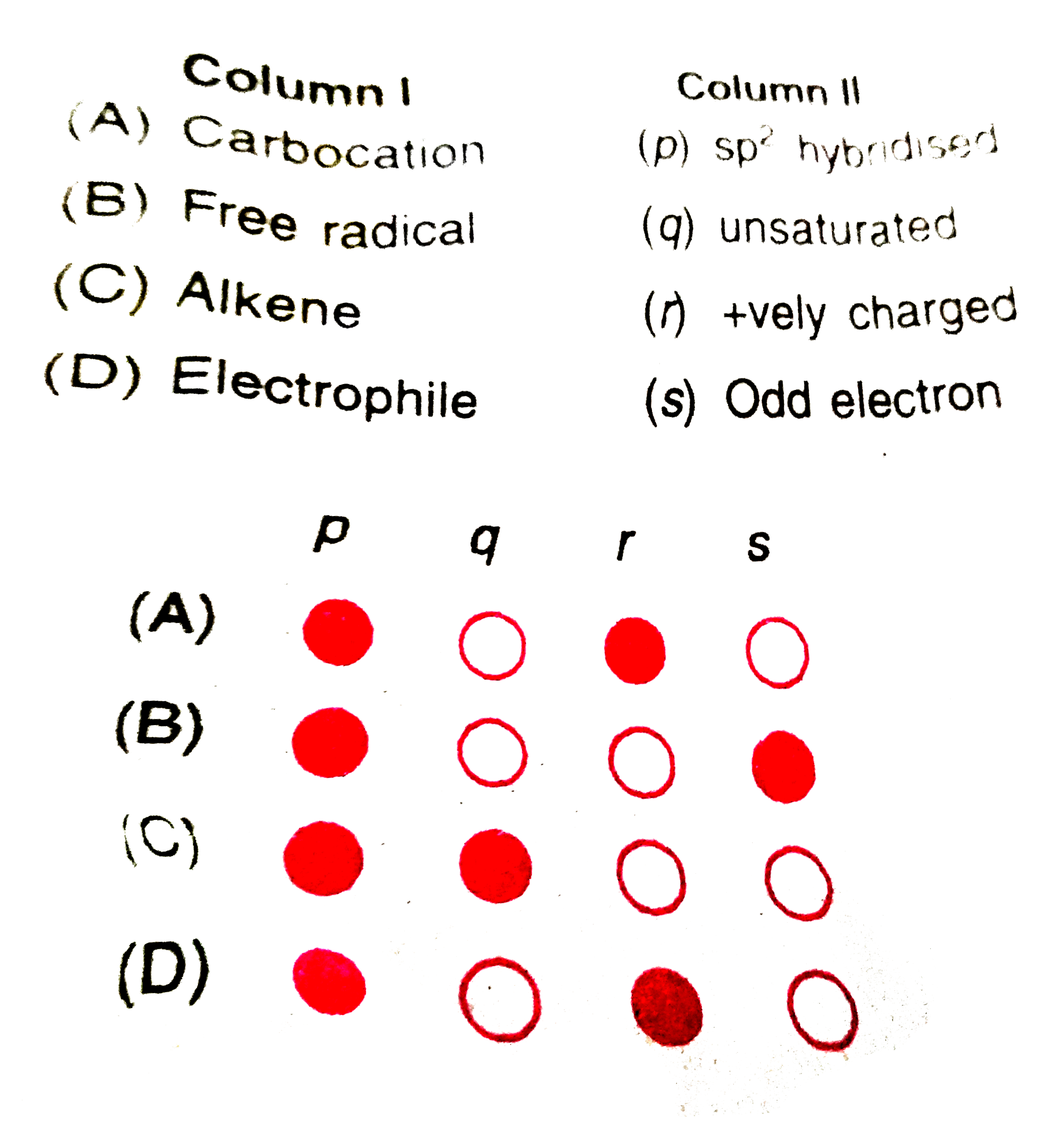
View SolutionMatch the statement (A, B, C, D) in Column I with the statements (p, q, r, s) in Column II. The answer are to be properly bubbled.
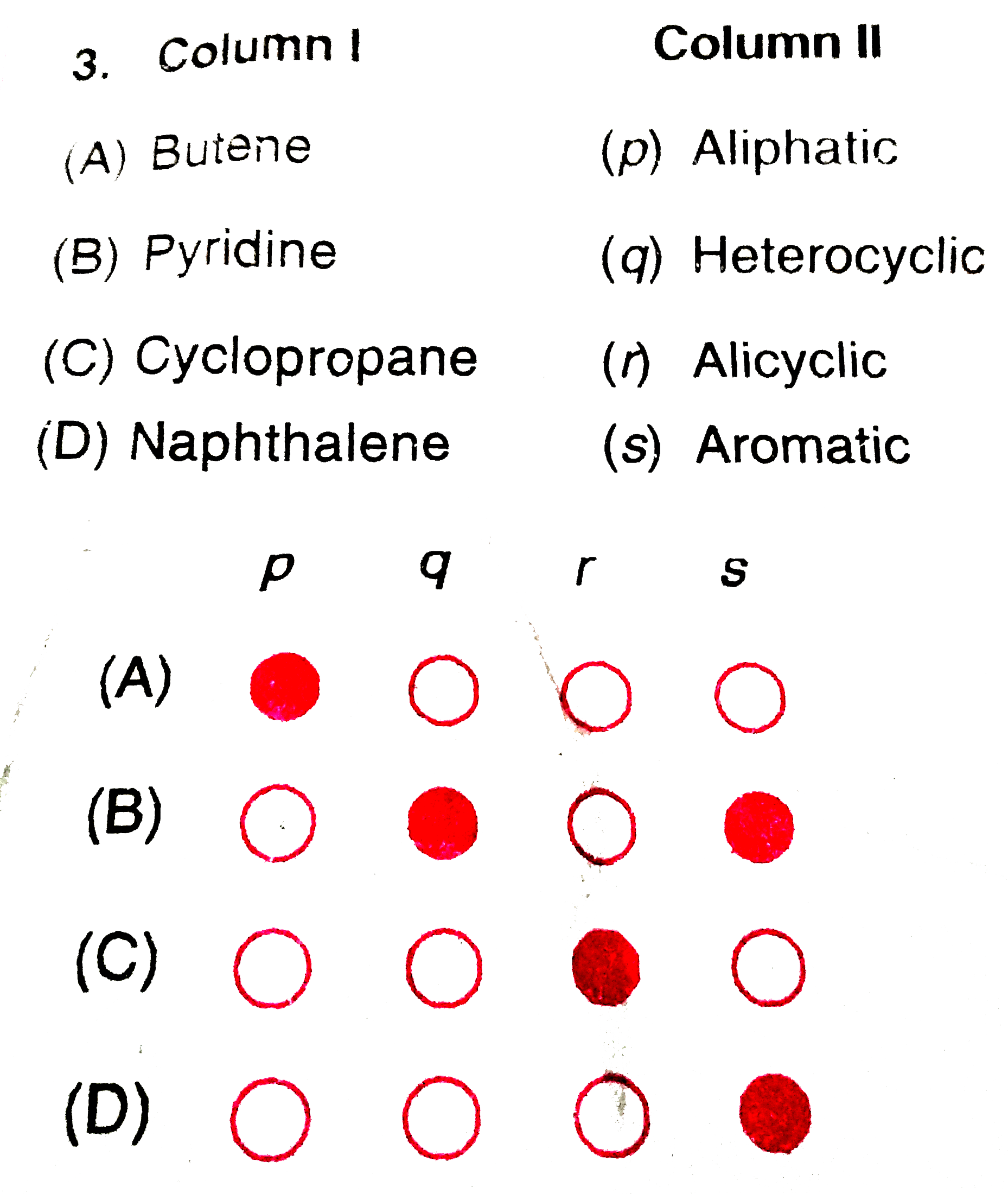
View SolutionMatch the statement (A, B, C, D) in Column I with the statements (p, q, r, s) in Column II. The answer are to be properly bubbled.
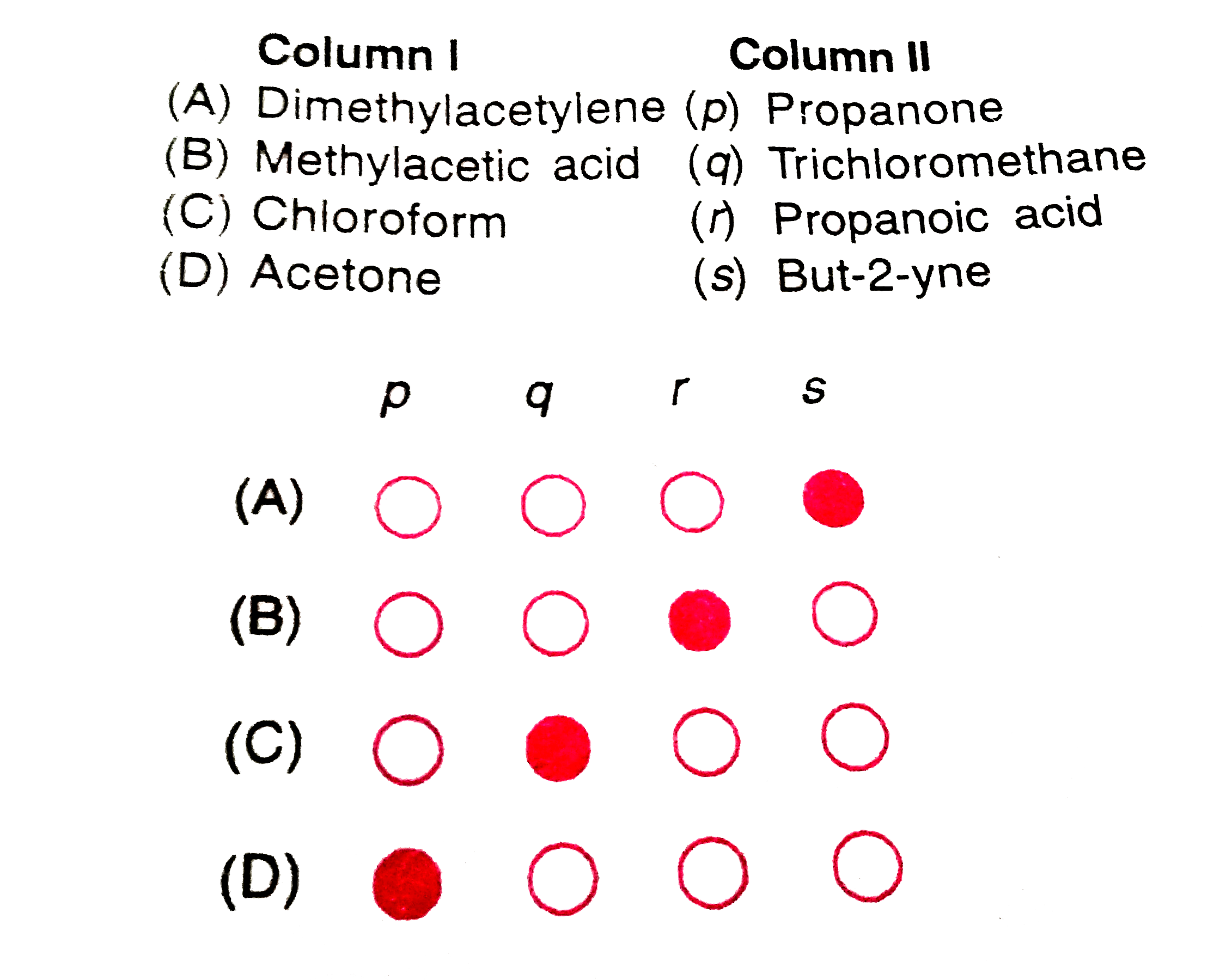
View Solution
